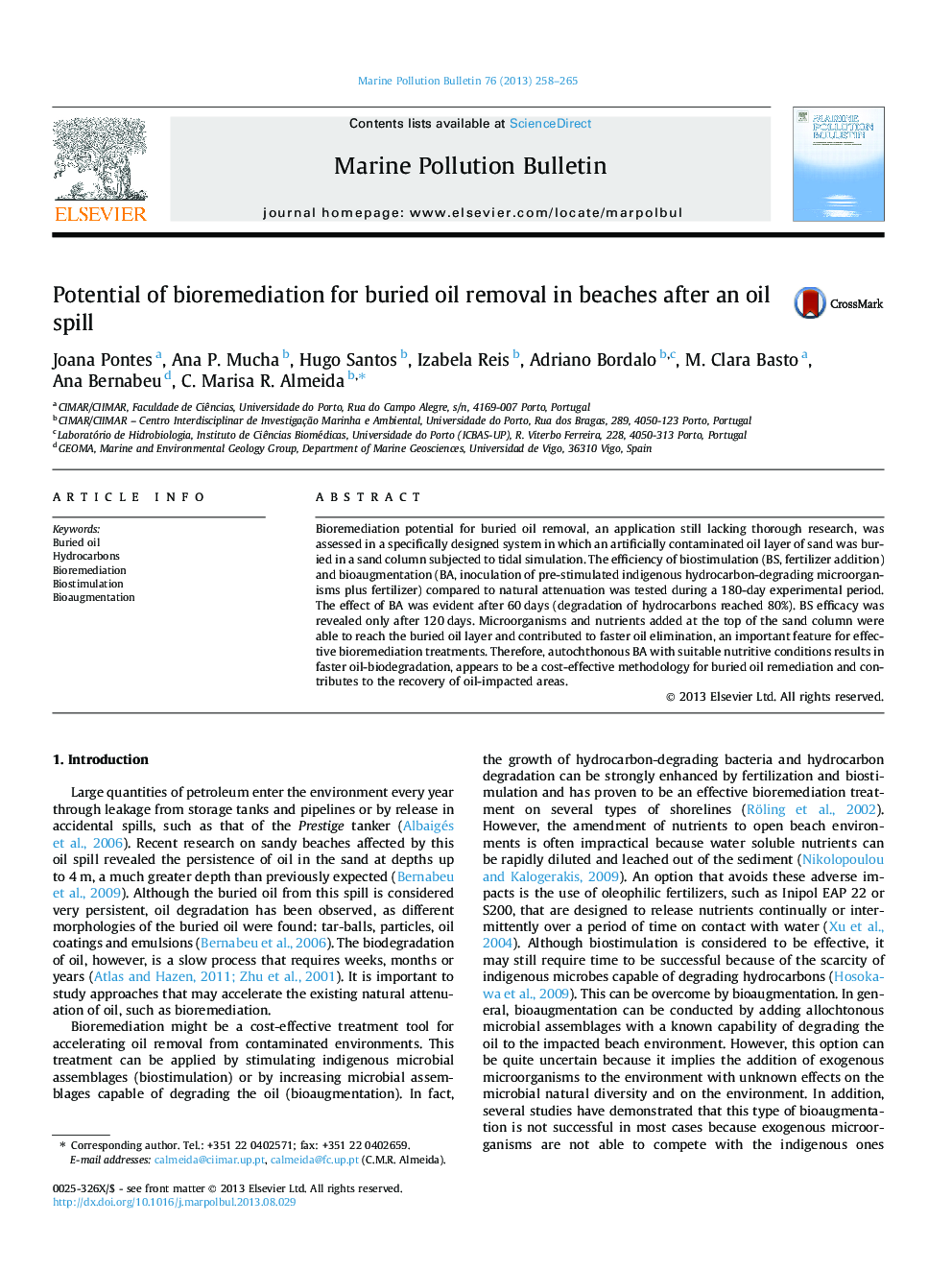| Article ID | Journal | Published Year | Pages | File Type |
|---|---|---|---|---|
| 6359116 | Marine Pollution Bulletin | 2013 | 8 Pages |
â¢Enhancing buried oil remediation is in need.â¢Tests carried out in a specifically designed system with tidal simulation.â¢Biostimulation and autochthonous bioaugmentation (ABA) are suitable options.â¢Microorganisms and nutrients added at the sand column top reached buried oil layer.â¢ABA with suitable nutritive conditions resulted in a faster oil-biodegradation.
Bioremediation potential for buried oil removal, an application still lacking thorough research, was assessed in a specifically designed system in which an artificially contaminated oil layer of sand was buried in a sand column subjected to tidal simulation. The efficiency of biostimulation (BS, fertilizer addition) and bioaugmentation (BA, inoculation of pre-stimulated indigenous hydrocarbon-degrading microorganisms plus fertilizer) compared to natural attenuation was tested during a 180-day experimental period. The effect of BA was evident after 60Â days (degradation of hydrocarbons reached 80%). BS efficacy was revealed only after 120Â days. Microorganisms and nutrients added at the top of the sand column were able to reach the buried oil layer and contributed to faster oil elimination, an important feature for effective bioremediation treatments. Therefore, autochthonous BA with suitable nutritive conditions results in faster oil-biodegradation, appears to be a cost-effective methodology for buried oil remediation and contributes to the recovery of oil-impacted areas.
